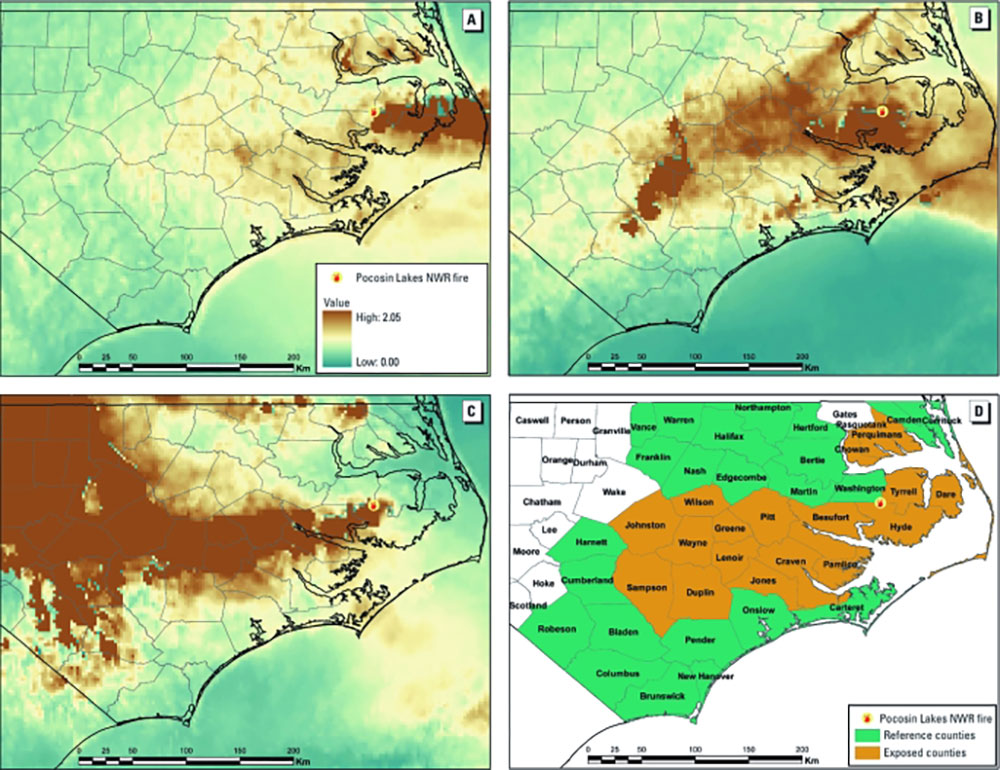Connecting Health Outcomes Research and Data Systems (CHORDS)

This example demonstrates the use of statewide syndromic surveillance data to study wildfire smoke exposures and emergency department (ED) visits. Syndromic surveillance data may be available in near real-time and this data sources provides an opportunity to identify wildfire-related health conditions of interest.
Summary:
Rappold et al. (2011) investigated effects of exposure to peat wildfire smoke on cardiovascular and respiratory outcomes. ED visit data were obtained from a statewide syndromic surveillance program, the North Carolina Disease Event Tracking and Epidemiologic Collection Tool (NC DETECT). Aerosol optical depth (AOD) measurements from NOAA’s Geostationary Operational Environmental Satellite (GOES) were used to determine exposure windows and areas most impacted by smoke plumes. Satellite data and syndromic surveillance data were combined to compare ED visits on high exposure days and in high exposure areas to those with lower exposure.
| Exposure Data | Health Data |
|---|---|
| NOAA Geostationary Operational Environmental Satellites (GOES) | North Carolina Disease Event Tracking and Epidemiologic Collection Tool (NC DETECT) |
Supporting Publication:
Peat Bog Wildfire Smoke Exposure in Rural North Carolina is Associated with Cardiopulmonary Emergency Department Visits Assessed Through Syndromic Surveillance
Rappold AG, Stone SL, Cascio WE, Neas LM, Kilaru VJ, Carraway MS, Szykman JJ, Ising A, Cleve WE, Meredith JT, Vaughan-Batten H, Deyneka L, Devlin RB. Peat bog wildfire smoke exposure in rural North Carolina is associated with cardiopulmonary emergency department visits assessed through syndromic surveillance. Environ Health Perspect. 2011 Oct;119(10):1415-20. Doi: 10.1289/ehp.1003206. Epub 2011 Jun 27. PMID: 21705297; PMCID: PMC3230437. [Abstract]


